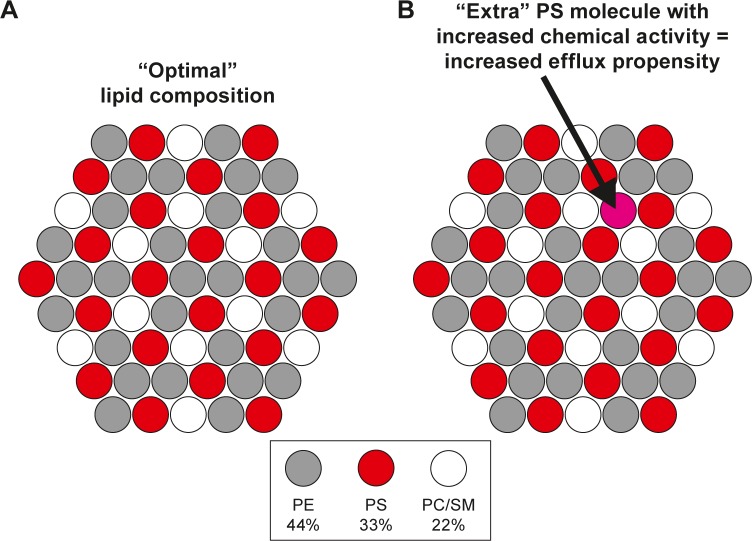Figure 1.
Lateral arrangement of the different GPLs in the inner leaflet on the human erythrocyte membrane as predicted by the superlattice model. (A) The membrane is viewed from above so that only the phospholipid head groups are visible. The superlattice model considers three distinct groups of phospholipids, ie, PE (a small head group), PS (a negatively charged head group), and PC + SM (a big head group). The arrangement shown here is consistent with the experimentally observed ratio of the three lipid groups (ie, 4:3:2, mole/mole).75 Notably, the model does not propose any long-range lateral order in the erythrocyte membrane (unlike implied by the model image shown). Rather, optimization of short-range lipid–lipid interactions is thought to drive the lipids toward the regular arrangement. Note also that in the proposed arrangement, no PS molecule (red) is proximal to another PS. (B) In case that a PE or PC/SM would be replaced by a PS molecule, this extra PS (pointed by an arrow) would necessarily be in contact with other PS molecules, which is energetically unfavorable due to a Coulombic repulsion between the negatively charged PS molecules. Thus, this extra PS would have an increased chemical activity and thus increased efflux propensity.

